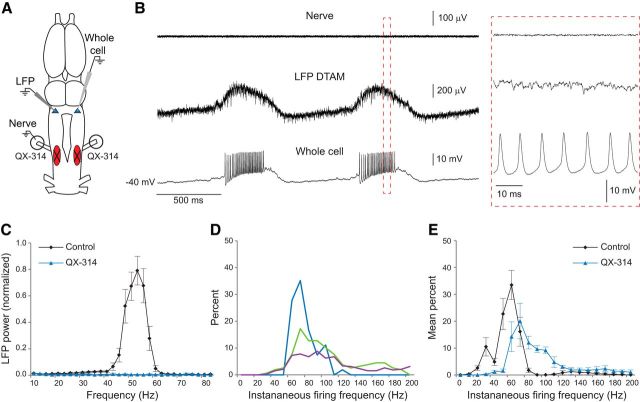Figure 4.
Silencing motor neurons disrupts premotor rhythms. A, Laryngeal nerve activity was silenced with the intracellular Na+ channel blocker QX-314 before recording from premotor neurons in DTAM. Circles around nerves represent Vaseline wells that were filled with the drug. B, Nerve activity is silenced by QX-314 (top), but 5-HT continues to induce activity in DTAM; LFP waves (middle) and long-lasting depolarizations in FTNs (bottom) persist; however, these lack the normal fast trill rhythms present in control brains. Red box represents area of expanded traces. C, Power spectra of LFP: predrug 50–60 Hz rhythms are lost following motor neuron silencing by QX-314 (n = 5 brains). Values are mean ± SEM. D, Spike rate histograms for three FTNs show that spike rates are faster and more variable in QX-314-treated brains (10 Hz bins; n = 3 cells from separate brains). E, Mean FTN spike rate distributions for all control and QX-314 FTNs (n = 6 and n = 3 cells, respectively, from separate brains; no statistical tests were performed due to small sample size). Control FTNs same as in Figure 2F. Values are mean ± SEM.

